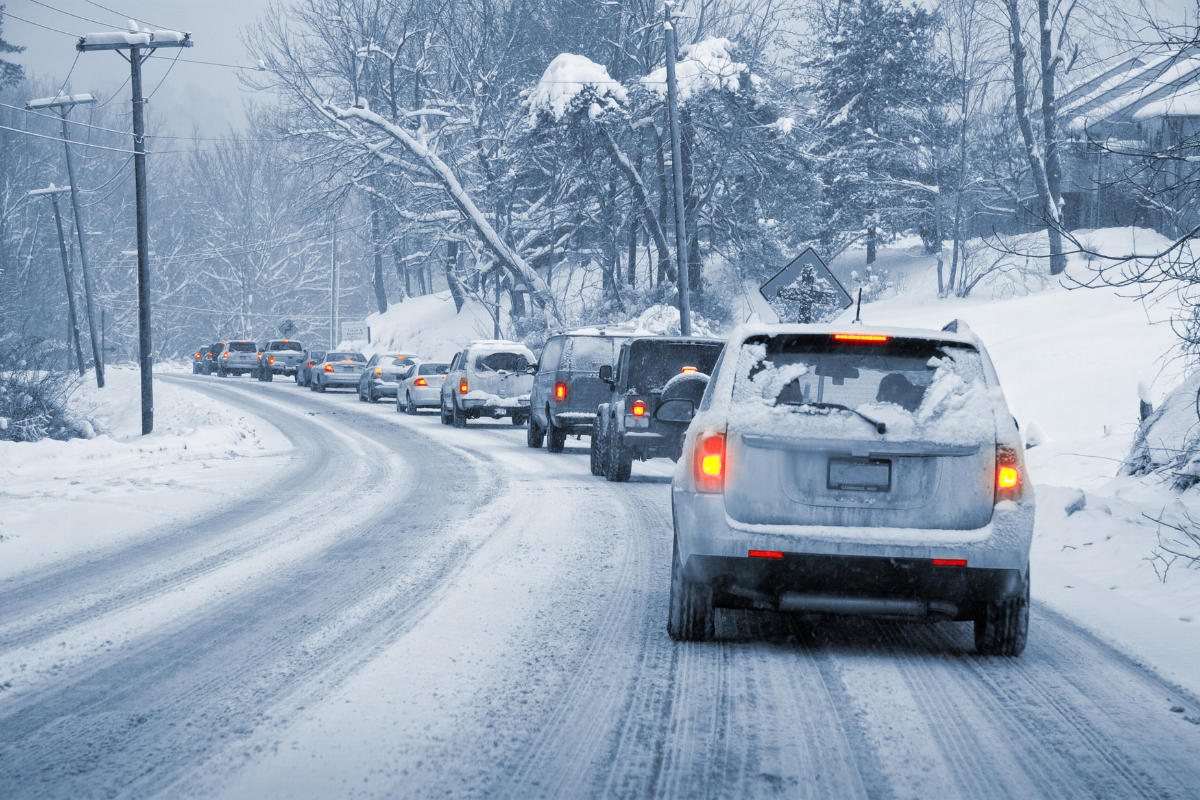Chances are you’ve seen the results of the first winter snowfall, and you might be anticipating the state of Edmonton’s roads for the next one. According to CTV Edmonton, one to three centimetres of snow caused 193 reported crashes on October 23 by 3:40 p.m. It can be hard to adjust to winter driving after being locked into summer driving habits. Here are some tips to help keep you safe on the road so everyone can arrive on campus safe and sound.
Use winter tires
While this tip may sound like a no-brainer, only 56 per cent of drivers in Alberta use winter tires, based on a 2022 survey from the Tire and Rubber Association of Canada. Traction is essential for good movement, turning and stopping on surfaces that are wet or snow-covered. Winter tires are specially designed for lower temperatures and the snow and ice that accompanies them. These tires provide better traction than summer or all-season tires because they keep their elasticity in cold winter temperatures. This allows for superior traction and grip compared to regular tires, which will stiffen in cold temperatures and slide like a hockey puck. The added traction and grip will allow you to stop in a shorter distance than you would have using summer or all-season tires.
Slow down
In the winter, road conditions can be scary. Black ice, snow and slush can make driving a lot more dangerous than usual. Posted speed limits are for when road conditions are at their best: dry and bare. Road conditions may change quickly, and even with winter tires, driving on snow and ice produces lower traction. Slowing down gives you more distance to stop. The more conditions degrade, the slower you should go. This applies to accelerating and braking as well. Accelerate slowly and provide lots of time to slow down and stop for traffic lights. Don’t stop as you would under normal conditions, because it takes longer to slow down on icy roads.
Increase your following distance
According to the Driver’s Guide: Cars and light trucks, you should at least keep a two-second following distance between your vehicle and the vehicle in front of you. During the winter, this distance should be tripled to at least five to six seconds, providing the increased distance needed to stop. It also gives you a safety cushion in case your vehicle skids, which can happen to any driver.
Have an emergency kit in your car
Even after taking all recommended precautions, sometimes things happen. When they do, having an emergency kit can help keep you safe until help comes. Emergency kits should contain items like:
- Non-perishable food
- Plastic water bottles
- Blankets
- Extra clothing, shoes and hats
- A first aid kid
- A small shovel, scraper and snowbrush
- A candle in a deep can and waterproof matches
- A crank flashlight
- A whistle
- Roadmaps and a compass
- A copy of your emergency plan
- Sand, salt, or non-clumping kitty litter for traction
- A fire extinguisher
- Jumper cables
A final note: Be ice aware
Ice tends to build up in specific locations because of varying conditions. Be extra wary around intersections, bridge decks and ramps. Slow down before reaching these areas.
Driving after a snowfall can be anxiety inducing, but with a sense of awareness, caution and preparation, you can get through this winter (and the winters to come) with minimal issues!





